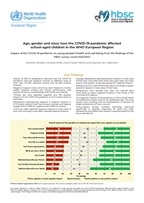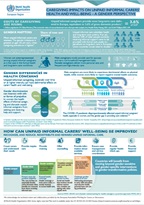Gender
Gender refers to the characteristics of women, men, girls and boys that are socially constructed. This includes norms, behaviours and roles associated with being a woman, man, girl or boy, as well as relationships with others. As a social construct, gender varies from society to society and can change over time.
Gender is hierarchical and produces inequalities that intersect with other social and economic inequalities, such as ethnicity, socioeconomic status, disability, age, geographic location, gender identity and sexual orientation, among others. This is referred to as intersectionality.
Gender interacts with but is different from sex, which refers to the different biological and physiological characteristics of females, males and intersex people, such as chromosomes, hormones and reproductive organs.
Gender and sex are related to but different from gender identity. Gender identity refers to a person’s internal and individual experience of gender, which may or may not correspond to their sex at birth.
Gender influences health outcomes, exposure to risk, access to information and resources, access to and experiences of health-care, participation in the health-care workforce, and many relevant social determinants of health and well-being.
Women and girls continue to experience gender inequality and discrimination that puts their health and well-being at risk. Gender-based violence, unintended pregnancies, early and forced marriage, and female genital mutilation are present in the WHO European Region.
Discrimination influences people’s experience of and access to healthcare, putting the health and well-being of groups of women, men and people with diverse gender identities at risk. Health services should be affordable, accessible and acceptable to all, and they should be provided with quality, equity and dignity.
Harmful gender norms can also affect boys' and men’s health and well-being negatively. Specific notions of masculinity may encourage boys and men to take health risks and not seek help or health care. Such gender norms also contribute to boys and men perpetrating violence – as well as being subjected to violence themselves.
WHO/Europe works with Member States to identify the effects of gender differences and inequalities on the health of women and men in their countries, and to design responses. A gender approach to health begins with the recognition of these differences and promotes the integration of gender as a social determinant of health into policy development, research, health services, resource allocation and project and programme planning, monitoring and implementation. It aims to achieve greater impact on health and reduce inequities by:
- collecting and using quantitative and qualitative sex disaggregated data;
- understanding and analysing the differences (gender analysis);
- developing gender responsive policies and interventions.
WHO/Europe follows the principles and guidance of the Strategy for integrating gender analysis and actions into the work of WHO approved by the World Health Assembly in 2007.











